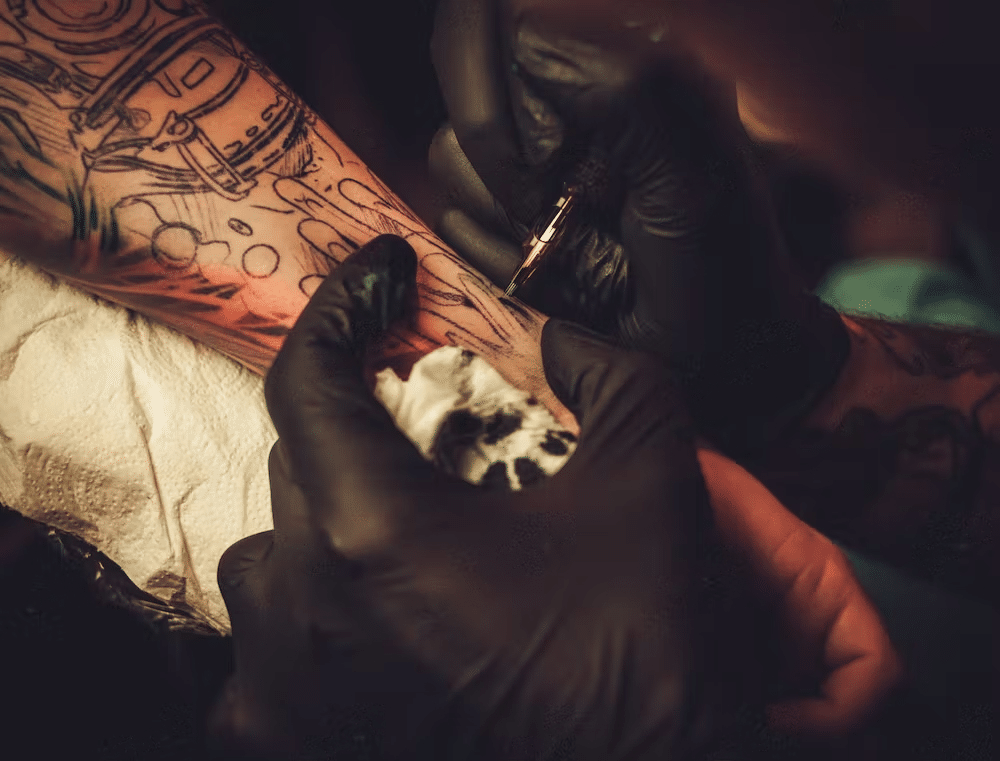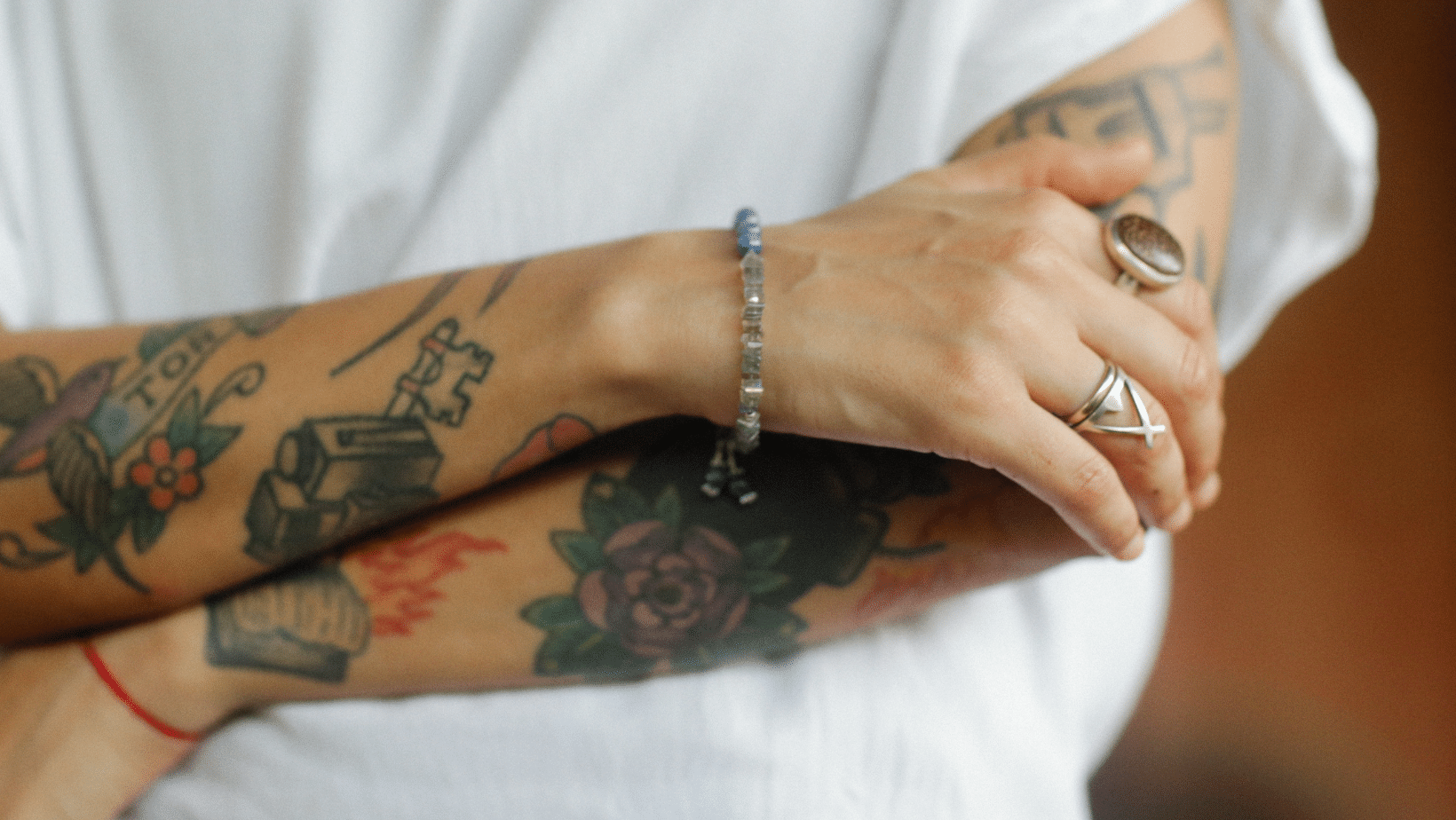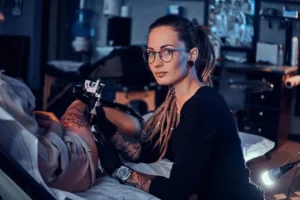
For a lot of people, getting a tattoo can be very exciting. You get to choose a design to ink on your skin that lasts a lifetime.What most people love about tattoos is the fact that these designs retain their quality no matter what, that is, when
aftercare is involved. Tattoo artists always advise keeping the site of the artwork wrapped for a period of time to enjoy the look for longer.However, you may not know for how long, but you will find out once you read this article. Discover the best ways to protect your skin while your new ink heals.
Tattoos And The Wrapping Process
Once the tattoo artist is done, the wrapping process begins. They first clean the area with a gentle soap or antibacterial cleaner. The artist will wrap the area with a professional tattoo bandage (preferred) or plain plastic foil once the skin is completely sterile, well-protected from germs and bacteria, and dried.The wrap is intended to be a barrier against dangerous bacteria and germs that can result in unwelcome infections. Until a new layer of skin has grown over the region,
this wrap guards your tattoo and wound.Wrap Your Tattoo And Protect Your Skin

Depending on the product (plastic foil or a tattoo bandage), your tattoo may need to be wrapped for
more than a day. It also depends on a few other elements, like the placement of your tattoos, if they are susceptible to infection, and whether you have any medical conditions that might make you recover more slowly than usual.
If Using Regenerative Tattoo Film:
For the first three to five days, keep your tattoo wrapped; after that, take it off and begin your cleaning regimen. Remove the film, wash the tattoo with antibacterial soap, and apply a new one if there is heavy bleeding.
Some tattooists will advise you to keep your tattoo wrapped for longer than one day after it is finished. An artist could advise you to keep simple, little line-work tattoos wrapped for a day or two, depending on the size of your tattoo. A longer period can be necessary for larger components. You would need to occasionally replace the film if your tattoo artist advised you to leave it on for longer than a few hours.You might find an accumulation of ink and plasma if you peek underneath the wrapper. It is very typical for first-time tattoo receivers to be concerned about this. A buildup of plasma and ink is a sign that the tattoo is healing, but it also indicates it’s time for a new covering. Rewrapping a tattoo is an easy procedure. You only need fresh wrapping, medical or micropore tape, and antibacterial, unscented soap.
How To Put Up With A Wrapped Tattoo At Night
As we’ve discussed, if you’re using regenerative tattoo film, the decision is clear: you should cover your tattoo at night.Several tattoo artists advise
putting on a fresh wrapping before bed for the first night simply because they feel that sleeping with a newly-inked tattoo may be painful and increase your chances of infection.It’s crucial to realise that keeping your tattoo wrapped prevents air from getting to the tattoo, which slows down the healing process. As a result, you should try to allow your tattoo to breathe as much as possible. Some tattooists contend that continuously covering your tattoo encourages the growth of bacteria and germs on the healing skin.
Benefits Of Wrapping Your Tattoo
Your tattoo artist may advise covering your tattoo for a variety of reasons, including the following:
#1 Creates A Safe Environment
Tattoos are a popular fashion trend that many people treasure for a lifetime. However, many people still have concerns about their safety before and after the tattoo process. The wrapping offers the ideal atmosphere for protecting the safety of your new tattoo and skin. This is so because the tattoo area had been thoroughly cleaned and moisturised before placing the wrap.
#2 Keeps Bacteria Away
The essential benefit of wrapping your tattoo is that it is a barrier against bacteria and other germs that can infect you. By controlling the environment around your tattoo,
you dramatically increase the chances of avoiding infection.#3 Protection Against Irritants
Environmental factors can negatively impact your new tattoo’s comfort and ability to heal properly it is exposed to. These include your bed, abrasive textiles, and more. Your newly inked skin will be protected from irritants with proper wrapping.Considering how painful it is for a large area of healing skin to bump into something accidentally, you must
ensure your safety with wrapping.Conclusion
Effective aftercare greatly depends on knowing when and how long to cover your tattoo. It’s crucial to cover the tattoo with a bandage or piece of plastic wrap after applying a thin coating of antibiotic ointment. Protecting your skin prevents bacteria from entering; it also shields the tattoo from irritation caused by rubbing against abrasive surfaces.
FAQ
Can you keep your tattoo covered for too long?
As mentioned above, it can cause infection by keeping the area too moist and
keeping your wrapping on for too long compromises the healing process. Without the proper exposure to oxygen, your freshly tattooed skin takes longer to heal. This elongated healing period can put you at a higher risk of infection.
Is it better to keep tattoos covered or uncovered?
If your tattoo is in an area not covered by clothing,
leave it uncovered to let your skin breathe and facilitate healing. Do cover up when you’re in the sun. Opt for loose-fitting, sun-protective clothing until your tattoo heals.
What happens if I don’t wrap my tattoo?
As mentioned, the main goal of having your new ink wrapped and covered is to help keep harmful germs and bacteria out of your new open wound.
These germs can pose a serious risk, not only to your tattoo but also to your general health, by causing unwanted infections.
 For a lot of people, getting a tattoo can be very exciting. You get to choose a design to ink on your skin that lasts a lifetime.What most people love about tattoos is the fact that these designs retain their quality no matter what, that is, when aftercare is involved. Tattoo artists always advise keeping the site of the artwork wrapped for a period of time to enjoy the look for longer.However, you may not know for how long, but you will find out once you read this article. Discover the best ways to protect your skin while your new ink heals.
For a lot of people, getting a tattoo can be very exciting. You get to choose a design to ink on your skin that lasts a lifetime.What most people love about tattoos is the fact that these designs retain their quality no matter what, that is, when aftercare is involved. Tattoo artists always advise keeping the site of the artwork wrapped for a period of time to enjoy the look for longer.However, you may not know for how long, but you will find out once you read this article. Discover the best ways to protect your skin while your new ink heals. Depending on the product (plastic foil or a tattoo bandage), your tattoo may need to be wrapped for more than a day. It also depends on a few other elements, like the placement of your tattoos, if they are susceptible to infection, and whether you have any medical conditions that might make you recover more slowly than usual.
Depending on the product (plastic foil or a tattoo bandage), your tattoo may need to be wrapped for more than a day. It also depends on a few other elements, like the placement of your tattoos, if they are susceptible to infection, and whether you have any medical conditions that might make you recover more slowly than usual.



